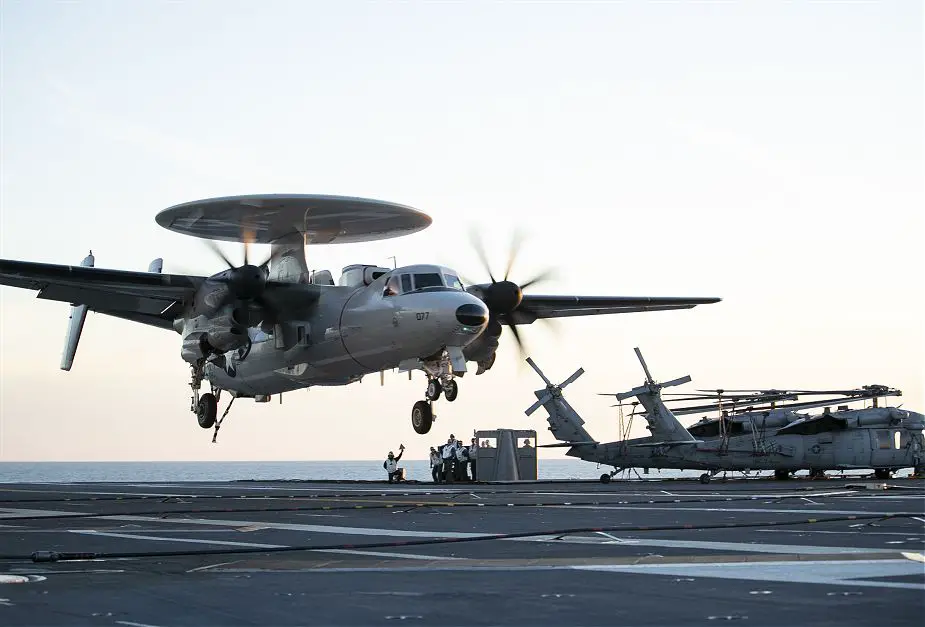The aircraft carrier USS Gerald R. Ford (CVN 78) of U.S. Navy departed its homeport of Norfolk, Jan. 16 to begin Aircraft Compatibility Testing (ACT) off the East Coast as the first aircraft, an E-2D landed, on board.
 An E-2D Advanced Hawkeye assigned to Air Test and Evaluation Squadron (VX) 20 lands aboard the aircraft carrier USS Gerald R. Ford (CVN 78). (Picture source US Navy)
An E-2D Advanced Hawkeye assigned to Air Test and Evaluation Squadron (VX) 20 lands aboard the aircraft carrier USS Gerald R. Ford (CVN 78). (Picture source US Navy)
ACT (Aircraft Compatibility Testing) continues the at-sea testing of Electromagnetic Aircraft Launch System (EMALS) and Advanced Arresting Gear (AAG) - two Aircraft Launch and Recovery Equipment (ALRE) systems unique to Ford – previously conducted in 2018 by the F/A-18 E/F Super Hornet. During this upcoming phase of ACT, compatibility testing will include: T-45 Goshawks, F/A-18 E/F Super Hornets, and E/A-18G Growlers from Air Test and Evaluation Squadron 23 (VX-23); and E-2D Advanced Hawkeyes and C-2A Greyhounds, from Air Test and Evaluation Squadron 20 (VX-20). This will be the first time the T-45, E-2D, C-2A and E/A-18G aircraft will launch and recover from the Navy’s newest aircraft carrier.
Ford last flew aircraft in January 2018 and has 747 launches and arrestments to date. This round of testing will allow the crew to further test the improvements made during its post-shakedown availability (PSA) at Huntington Ingalls Industries-Newport News Shipbuilding while also allowing the crew to gain experience on these unique systems.
EMALS is the launch system of choice for Ford and all future Ford-class aircraft carriers. Its mission and function remain the same as traditional steam catapults; however, it employs entirely different technologies. EMALS uses stored kinetic energy and solid-state electrical power conversion. This technology permits a high degree of computer control, monitoring and automation. The system will also provide the capability for launching all current and future carrier air wing platforms – lightweight unmanned to heavy strike fighters.
The software-controlled AAG is a modular, integrated system that consists of energy absorbers, power conditioning equipment and digital controls, with architecture that provides built-in tests and diagnostics, resulting in lower maintenance and manpower requirements. AAG is designed to provide higher reliability, increased safety margins and reduce fatigue impact load on aircraft. Similar to EMALS, it will also allow for the arrestment of all current and future air wing assets.
The information captured during ACT will continue to inform improvements and modifications for Ford and follow-on Ford-class of aircraft carriers.
For Rear Adm. Roy “Trigger” Kelley, Commander, Naval Air Force Atlantic, a successful ACT also serves as an important stepping stone towards Ford’s eventual Flight Deck Certification, expected to take place in March 2020.



